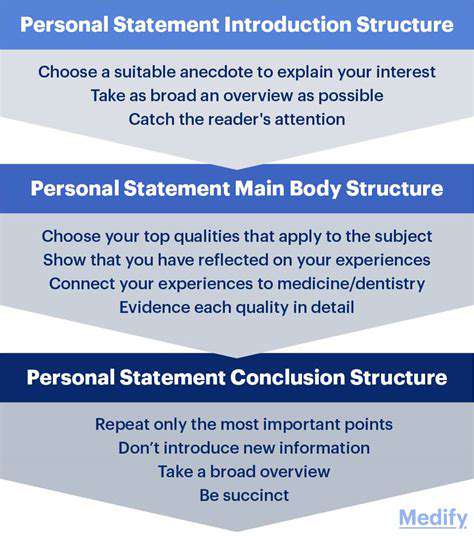“I Statement” Formulas to Express Needs Without Blame
Outline
- I-Statements foster open communication and non-defensive responses.
- They center on personal feelings, reducing conflict in conversations.
- Effective structure includes feelings, behaviors, and impacts.
- Practicing I-Statements enhances clarity in discussions.
- I-Statements improve relationship dynamics and emotional intelligence.
- Avoid blame to minimize defensiveness and promote empathy.
- Be specific in feelings to enhance understanding and clarity.
- Practice in low-stakes environments boosts confidence for sensitive discussions.
- Role-playing can help reinforce effective I-Statement usage.
- I-Statements can transform relationship communications positively.
The Basics of I-Statements
Understanding I-Statements: Definition and Purpose
I-Statements serve as a communication tool that prioritizes expressing personal emotions and needs without assigning fault. By starting sentences with I instead of you, individuals create space for open dialogue while reducing the listener’s urge to become defensive. This method not only encourages healthier conversations but also strengthens connections between people.
The main goal of I-Statements is to articulate one’s inner experiences with clarity. Studies in interpersonal communication reveal that this approach lowers tension and builds mutual understanding. When used consistently, it can transform how people navigate disagreements, leading to resolutions that satisfy both parties.
The Structure of I-Statements
An effective I-Statement typically follows three steps: naming the emotion, describing the specific action, and explaining its effect. For example: I feel anxious (emotion) when plans change last minute (action) because it disrupts my ability to prepare (effect). This formula keeps the focus on the speaker’s perspective, making it easier for others to respond without feeling attacked.
Mastering this structure is vital for Effective Communication. Testing different phrasings in everyday scenarios—like asking a roommate to clean up—helps refine this skill. Over time, these adjustments can smooth interactions in both personal and professional settings, fostering teamwork and reducing misunderstandings.
Benefits of Using I-Statements
Beyond clearer communication, I-Statements offer profound relational benefits. They de-escalate conflicts by shifting focus from blame to shared understanding. For example, couples in counseling who adopt this technique often report fewer heated arguments and more collaborative problem-solving.
I-Statements also empower individuals to own their emotions, which builds self-confidence and models vulnerability for others. This openness can ripple through workplaces and families, creating environments where people feel safe to express themselves authentically.
Common Mistakes When Formulating I-Statements
Even with good intentions, people often slip into hybrid statements that dilute their message. Phrases like I feel like you’re ignoring me still subtly blame the listener. Instead, I feel lonely when we don’t talk during meals centers the speaker’s experience without accusation.
Vague emotions also weaken I-Statements. Saying I feel upset leaves room for misinterpretation, whereas I feel unappreciated when my efforts go unnoticed provides concrete context. Practicing with specific examples—and asking for feedback—helps avoid these pitfalls.
Practicing I-Statements in Daily Life
Integrating I-Statements requires mindful repetition. Start small: next time a coworker interrupts, try I lose my train of thought when I’m cut off, and I’d appreciate it if we could take turns speaking. This approach invites cooperation rather than defensiveness.
Role-playing with a friend accelerates learning. Simulate scenarios like addressing a partner’s late arrivals or a child’s forgotten chores. With practice, these statements become second nature, reshaping conversations into opportunities for connection rather than conflict.
How to Structure Your I-Statement

Understanding the Components of an I-Statement
Every impactful I-Statement has three parts: emotion, context, and need. For instance, I feel overwhelmed (emotion) when deadlines shift suddenly (context), and I need clearer timelines to work effectively (need). This structure prevents blame while clearly outlining the issue.
Psychologists emphasize that separating feelings from judgments reduces friction. By focusing on observable actions (when reports are delayed) rather than character critiques (you’re irresponsible), conversations stay solution-oriented.
Examples of Effective I-Statements
- I feel sidelined when decisions are made without my input, and I’d like to be included earlier in the process.
- I worry about our budget when unexpected expenses arise, so I need us to review our spending weekly.
- I feel disconnected when we don’t share meals, and I’d love to prioritize dinner together twice a week.
Specificity is key. Compare I’m stressed about work to I feel drained when handling client calls alone, and I need support to balance the load. The latter gives the listener actionable insight into your experience.
Practical Tips for Implementing I-Statements
Start practicing in low-pressure settings, like discussing weekend plans with a friend. Pay attention to tone—softening your voice and maintaining open body language reinforces the collaborative spirit of I-Statements.
Pair your statements with active listening. After expressing your needs, ask questions like How does this land for you? to invite reciprocity. This balance of speaking and listening builds trust and mutual respect over time.
Benefits of Using I-Statements
Improving Communication Clarity
I-Statements act like a spotlight, illuminating your inner world without blinding others with accusations. For example, telling a teammate I get confused when instructions change mid-task is clearer than You’re terrible at explaining things. This precision minimizes misunderstandings and keeps discussions productive.
Promoting Emotional Intelligence
Regular use of I-Statements trains self-awareness. By repeatedly articulating emotions (I feel undervalued...), you become more attuned to subtle emotional shifts. This skill spills into other areas, helping you navigate social dynamics with greater finesse.
Emotional Intelligence grows as you learn to name nuanced feelings—distinguishing irritation from disappointment, or loneliness from overwhelm. Over time, this vocabulary deepens self-understanding and empathy for others.
Encouraging Personal Responsibility
I-Statements are ownership in action. Saying I feel hurt when jokes target my insecurities acknowledges your feelings without demanding others change. This subtle shift invites collaboration—people are more likely to adjust behavior when not feeling attacked.
Enhancing Relationship Dynamics
Relationships thrive when both parties feel heard. I-Statements create this balance. A parent might tell a teen: I feel concerned when you come home late without texting, because I want to know you’re safe. This opens dialogue far more effectively than accusations like You’re so irresponsible!
Common Mistakes to Avoid

1. Not Taking Responsibility for One's Feelings
Blaming others backfires. Compare You make me feel ignored to I feel ignored when my suggestions aren’t acknowledged. The latter owns the emotion while describing the situation objectively.
2. Overgeneralizing Statements
- Avoid absolutes like always or never—they trigger defensiveness.
- Instead of You never help with chores, try I feel stretched thin when handling household tasks alone.
3. Ignoring the Other Person's Perspective
Balance is crucial. After sharing your I-Statement, ask How does this situation feel from your side? This shows respect for their experience and fosters mutual problem-solving.
Practice Makes Perfect
Understanding the Role of Practice in Communication Skills
Like learning a language, I-Statements require regular use to feel natural. Start by rewriting past conflicts using the I-Statement formula. For example, transform You’re so forgetful! into I feel frustrated when agreed-upon tasks aren’t completed, because it adds to my workload.
Strategies for Practicing I-Statements in Everyday Situations
Turn minor irritations into practice opportunities. If a barista gets your order wrong, try I was really looking forward to a latte, and I’m disappointed to receive a cappuccino. Could we fix this? These small wins build confidence for bigger conversations.
Read more about “I Statement” Formulas to Express Needs Without Blame
Hot Recommendations
- Kink Friendly Marriage Counseling for Exploring Sexual Boundaries
- Multigenerational Home Living Arrangements and Marriage Strain
- Surrogacy Legal Guidance for Same Sex Married Couples
- Steps to Repair Broken Trust When Marriage Feels Fragile
- Montessori Parenting Styles and Their Impact on Marital Unity
- Sensate Focus Exercises Recommended by Sex Therapists
- “I Statement” Formulas to Express Needs Without Blame
- Tiny House Living Adjustments for Minimalist Married Pairs
- Highly Sensitive Person (HSP) Marriage Dynamics and Coping
- Post Traumatic Growth Strategies for Crisis Surviving Marriages



